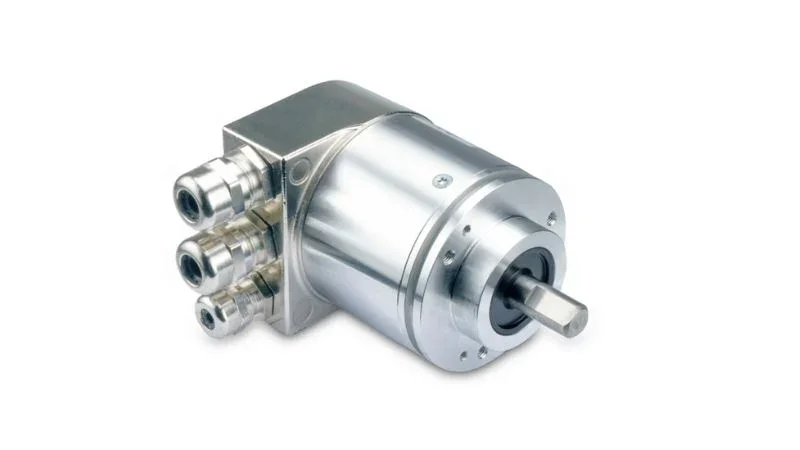
The Baumer EN580C is designed for easy integration and low maintenance, promising reliable performance in sensing object location, making it a versatile option.
Baumer has announced their newest encoder, the EN580C. This multi-turn optical encoder ensures accurate positioning of objects, making it useful in a wide range of manufacturing, packaging, and assembly automation systems.
Optical Encoders
Optical encoders count the number of rotations of a shaft using light. Depending on the configuration, light shines onto a disk that is attached to the shaft. Either light passes through clear segments of the disk and is blocked by dark sections, or light is reflected from some sections and not others. In either case, a light detector counts the number of pulses and then can calculate the position of the shaft based on these pulses.
The encoder's resolution is limited to the spacing between the light and dark segments. Fine resolution requires lots of light and dark areas on the encoder disk. However, very fine lines or slots can be printed onto the disk, yielding high accuracy.
The main advantage of an optical encoder is that the position measurements are non-contact in nature. The light source and the encoder disk are spaced a short distance apart, meaning they do not wear and can last a long time. The limitation of this system is that the encoded disk is sensitive to dust and dirt that can block the light, so the encoder must be sealed to prevent this from happening.
EN580C
While there are many optical encoders on the market, the Baumer EN580C offers several key features that enhance its versatility. First, it can position to within 0.01° of accuracy, demonstrating its capability for precision alignment of components. Second, it plays nicely with existing automation systems through backward compatibility and communication through CANopen or Profibus fieldbus. Third, the EN580C requires just basic maintenance and does not require it very often, making it an obvious substitute for obsolete encoders.
The Baumer EN580C Fieldbus Encoder. Image used courtesy of Baumer
These encoders are housed in a standard 58 mm diameter configuration, meaning they can quickly replace obsolete encoders. They come equipped with an M12 connector or can be wired in a user-configurable fashion. Solid, hollow, and blind hollow shaft models are available.
All models allow for convenient, application-specific parameterization, such as dynamic process data object mapping, gear function, and others, making integration with existing automation systems straightforward. The ability to address switch, altering the node ID and baud rate also speed up this integration process.
Perhaps one of the most important features is the longevity and availability of this encoder. The encoder is available today and will be offered for quite some time into the future. This means there will be no need to upgrade the encoder in a few years; it helps “future-proof” the entire automation system.
Potential Markets
Who can’t use an accurate, low-maintenance optical encoder? Virtually any manufacturing process requiring precise component alignment during assembly, light machining, packaging, or other key operations will benefit from the EN580C. Besides the accuracy and low maintenance demands, the ease of installation and integration into existing systems make it a great choice for modernizing automation.


